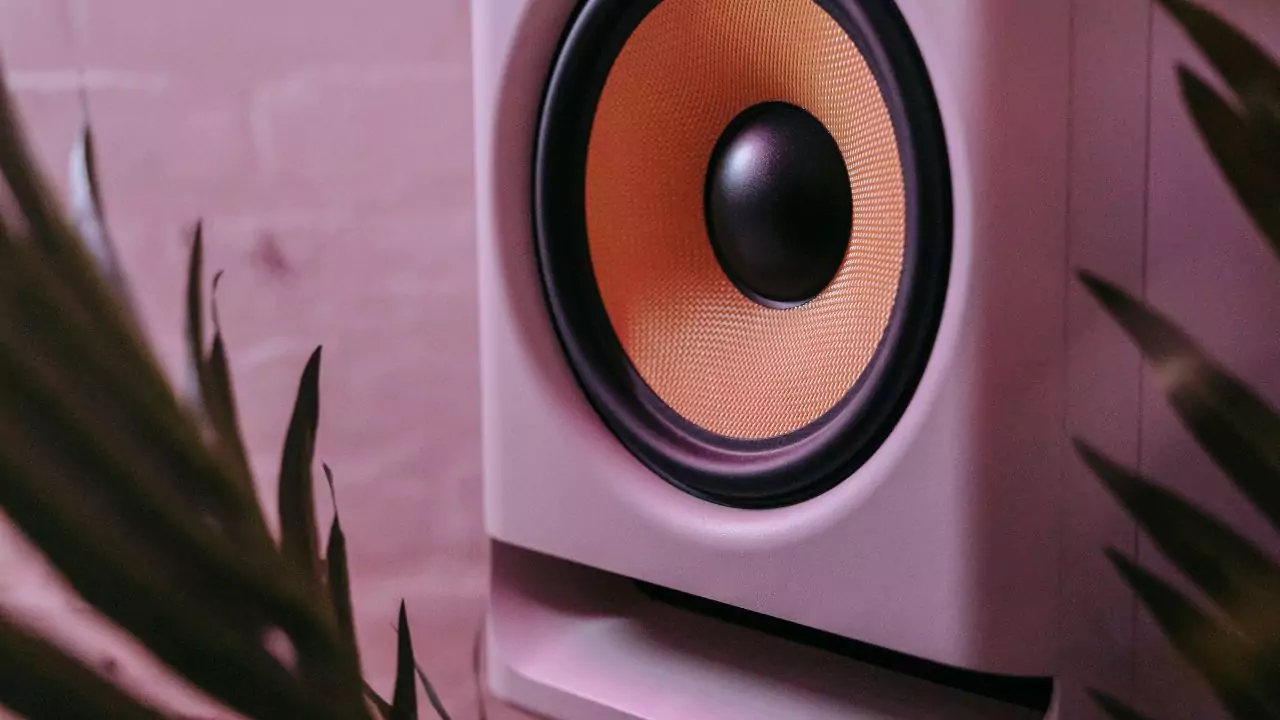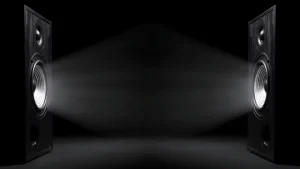To measure a subwoofer, follow these steps. Place the subwoofer upright and measure the depth of the mounting from the bottom to its frame. This distance is known as the mounting depth. For accurate measurements, place the speaker on a flat surface and use a ruler or tape measure. Start measuring from the sub’s back to the frame. Additionally, measure the width, height, and diameter of the subwoofer cone.
In This Article:
How to Measure the Sub-Parts of the Subwoofer?
While measuring you need to take into account three parts of the subwoofer: Speaker, Cutout, and mounting.
Speaker
You need to measure the width of the speaker cone, and it also varies from the entire width of the subwoofer. The measuring parts would include all the surrounding space and components. A speaker diameter is generally between 20 to 25 cm and you also need to pay attention to the shape which plays an important role in how the subwoofer will sound. Generally speaking, round subwoofers produce more sound than a square one.
Cutout
Cutout is the size that you need to cut in your car’s speaker panel to mount a subwoofer. So, double-check that you got the right cutout diameter before you purchase the subwoofer. If the cutout is too small, then you won’t be able to fit a bigger subwoofer and end up wasting your money. On average a cutout diameter is between 20 to 25 cm.
Mounting
When it comes to mounting, you need to measure the height and the depth. The mounting height of the subwoofer is the maximum distance that it covers from the floor to the place where it is placed. This measurement is typically between 12 to 16 inches above the floor. Measuring the mounting depth is also important to get the best sound output and this ensures the subwoofer lasts longer. With an adequate mounting debt, you won’t face any stability issues or stuck punctures.
How to Measure the Subwoofer?
Explore one of the easiest methods to measure a subwoofer. Here you will get a step-by-step process of measuring the device.
Step 1: Remove the Subwoofer Driver from the Enclosure
First, you have to remove the subwoofer, so turn it off and take out the screws that hold it on the mount or enclosure. Remove the covers from the back and loosen the screws. Unpack the new addition to the enclosure, remove all the connected wires, and make sure everything is separate. This is also known as the pre-installation process.
Step 2: Calculate the Subwoofer Mount Depth
Place the subwoofer upright and measure the depth of the mount. You need to calculate the distance between the back of the speaker and the mount frame. Also, you can calculate the depth by measuring the bottom of the subwoofer to the mounting frame. How deep you mount the subwoofer is going to reflect in the size and weight. This measurement will also ensure that the vibrations do not cause any instability issues.
You also need to take two extra measurements – one is the subwoofer top and bottom mounting depth and this is the exact place where the tweeter is going to be located. It is also counted as the distance from the mounting frame to the placement of the subwoofer.
Step 3: Measuring the Height of the Mount
It is always recommended to take measurements based on industry standards to ensure that the speakers provide the best performance and also last longer. So, after you calculate the size of the subwoofer, place it in such a way that the widest part faces upward. Also, measure with a measuring tape to locate how far it is from the surface mount or you can also consult with the mounting frame guide while measuring the depth of the surface mount from the bottom to top.
Next, mark any holes that should be made on the surface level with the pencil or pen and check how far each slot is and also the width that would fit without blocking the device completely. Also, measure the height of the subwoofer, which should not exceed the maximum limit otherwise it can be damaging.
Step 4: Examine the Cut Out Diameter
You need to ensure that the largest part of the cone faces down, so flip the subwoofer upside down and take measures from one mounting hole to another. Always keep track of the details and then measure the width of the subwoofer from the largest point on its side. Also, measure how far the four mounting holes are and try measuring them diagonally to understand more about the size of the enclosure.
Why Should You Drill Holes for the Mount?
Before you buy the new subwoofer, you must measure the mount holes, so that the fit should be perfect for the enclosure and you get to understand where you need to drill new holes that would support the subwoofer.
Let’s get through the techniques that you need to implement:
Step 1: Draw the Diameter of the Outer Hole
You need to understand how large the opening for the subwoofer should be, so place the ruler or take any measuring tape and measure from one edge to another. If they are equal in size, then move down. Moreover, irrespective of the shape of the hole you must always measure from the largest points from all angles.
Step 2: Calculate the Inside Diameter of the Whole
You need to detect the recent recessed lips at the place where you want to place the subwoofer. Measure the inner diameter of the enclosure and understand how big enough it is, so that you can place the subwoofer without any restrictions. Place one side against an object and then measure across from that point to find how long they are in inches.
You need to ensure the measurement matches with those on file. The greatest point on each side of the hole should be marked near a recessed area which would allow more depth while installing the subwoofer. Remember that the cut out hole of the recessed lip should be smaller than normal. If it does not fit the mounting hole, then it can cause severe damage.
Step 3: Determine the Subwoofer Space Depth
The space depth is the area where the subwoofer will be placed, so is very important to consider while you are making a selection. You can use a ruler to measure how much your subwoofer sizes are so place one end against any surface and carefully measure until you reach its length to provide you the accurate size range.
Remember that the mounting of the subwoofer should not exceed the depth of the enclosure. This also ensures that the fitting is perfect and you won’t face any problems during the mounting.
Step 4: Calculate the Patterns of the Screw or any Special Features
You need to measure the distance between each screw through the hole while designing a new enclosure. This helps to determine the distance between two screws so that you can match off with the subwoofer. They should be even and also similar measurements in terms of length and height. If you find that the screw holes don’t match with the template, then you can always drill new ones.
How to Measure a Square Subwoofer?
You need to apply the box method to measure a square subwoofer. Thus, you need to take into account the width and depth of the box. Usually, the width is 16” and the depth is 12” for a 16” woofer. On the other hand if you want to measure a box for a 6” woofer, then it would be much smaller.
Why is Subwoofer Impedance Important?
Based on the subwoofer impedance you get to understand how much power it is going to draw from amps during the process.
How to Choose the Subwoofer Size?
If you are looking for a subwoofer for a small room, then go for a 10 to 12-inch device that has 100 watts. However, if you reside in a larger room, then more power is required as the bass sound is able to fill the entire room.
What are the Popular Sizes of a Subwoofer?
The popular sizes of subwoofers are 10” and 12” and other than this, you can also get subwoofers for 6.5”. Basically, a larger subwoofer would provide you with a deep bass and a smaller one would have a low-end output.




